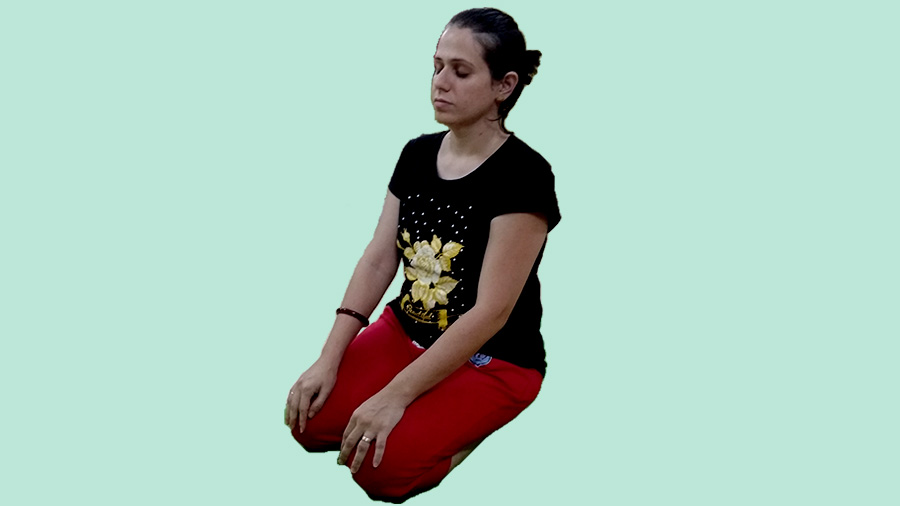Table of Contents
Vajrasana (Thunderbolt Pose) – Steps & Benefits
Vajrasana is considered one of the meditation postures in many cultures in the world. It is also called Thunderbolt Pose as it takes its name from the Sanskrit word ‘Vajra’, which means a thunderbolt and ‘Asana’ which means pose. Thunderbolt is said to be the weapon of Lord Indra, the king of gods. Vajra is also one of the major Nadi, which is directly connected with the genito-urinary system and which regulates the sexual energy in the body. Control of Vajra Nadi means control of sexual energy. Vajrasana is also called diamond pose and Adamantine Pose. It is said that by practicing the Diamond Pose, the body becomes as strong as a diamond.
Vajrasana Steps
- Spread a yoga mat and kneel on it with the knees close together.
- Bring the big toes close to each other keeping the heels apart.
- Come to a sitting position with your buttocks resting on the inside surface of the feet and your heels touching the side of the hips.
- Place your hands on your thighs, palms down.
- Keep your back and head straight but without straining.
- Close your eyes and relax your arms.
- Allow the breath to be normal and observe the flow of your natural breathing process.
How long can you sit in Vajrasana?
If you want to practice Vajrasana for the spiritual purpose you can sit for an extended period of time, which depend upon your ‘sadhana’ period. Ideally, 3-5 minutes of daily practice is sufficient to loosen up your legs. If you experience any strain, immediately leave the asana. This is one of the asanas which even can be done after having a meal. Vajrasana is very good for digestion. Practice Vajrasana for at least 5 minutes after taking a meal.
Vajrasana Tip For Beginners
If you have trouble sitting in Vajrasana because of tightness in your thighs or pain in your knees, put a cushion or folded blanket between your thighs and calves. If you feel discomfort in the fronts of your ankles, which is quite natural for beginners, you can put a rolled towel or blanket underneath them.
Vajrasana Precautions
- Do not practice Vajrasana if you have any knee or ankle injury.
- If you are suffering from spinal column aliments, especially on the lower vertebrae, you should not perform this asana.
- If you feel any pain in your knees during the practice, immediately leave the pose.
- Never force the pose. Have patience. It can take some time for you to be able to sit on your heels.
Vajrasana Benefits
- Vajrasana strengthens the pelvic muscles.
- Regular practice of this asana helps to relieve piles.
- The thunderbolt pose can be used as a preventive measure against a hernia.
- This asana is so beneficial for those people who are suffering from blood pressure.
- Vajrasana helps in digestion and removes constipation.
- Vajrasana helps to improves blood circulation throughout the body.
- The practice of Vajrasana for extended periods calms the mind and is a very good asana for meditation.
- It helps to tone the muscles of the hips, thighs and calf muscles.
- It is useful in dilated veins of the testicles and hydrocele in men.
- It is a very good asana for females as it alleviates menstrual disorders.
- Vajrasana stimulates the Vajra Nadi, activates the flow of Pranas in Sushumna Nadi and redirects sexual energy for spiritual purposes.
Thunderbolt Pose is used by Zen Buddhists and Muslims as a meditation pose or as a pose for prayer. For those people who find it hard to sit in Padmasana or Siddhasana for meditation, may sit in Vajrasana for the practice. Practicing Thunderbolt Pose regularly can bring a great amount of peace and stability to all your yoga practices.

